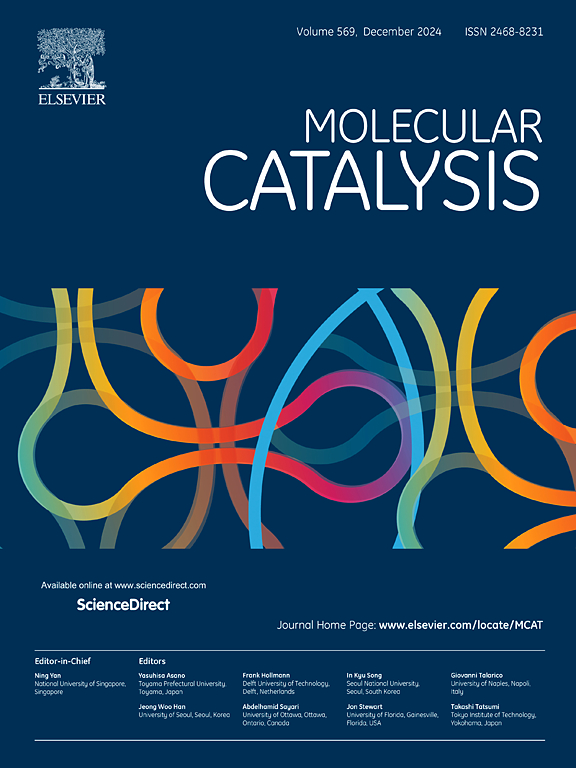Uniformly dispersed Bismuth nanoclusters anchored on reduced graphene oxide (rGO)&carbon black for high-efficiency electroreduction CO2 to formate
IF 3.9
2区 化学
Q2 CHEMISTRY, PHYSICAL
引用次数: 0
Abstract
In this work, bismuth metal nanoclusters immobilized on reduced graphene oxide (rGO) and carbon black (Bi/rGO&CB) were found to be highly efficient catalysts for the electrochemical reduction of carbon dioxide (CO2) to formate (HCOO-). During the CO2 electroreduction process, Bi/rGO&CB exhibited a Faradaic efficiency (FE) for HCOO- of 94.16 % at -0.88 V versus the reversible hydrogen electrode (RHE). Additionally, at -1.18 V vs. RHE, the current density for HCOO- production in the presence of Bi/rGO&CB reached -16.0 mA·cm-2, which is nearly three times higher than the -6.5 mA·cm-2 observed with commercial Bi powder. The presence of nanocrystal clusters in Bi/rGO&CB significantly enhances both the catalytic activity and Faraday efficiency of the catalyst. Mechanistic studies revealed that these nanocrystal clusters in Bi/rGO&CB facilitate the Faradaic process and accelerate reaction kinetics compared to Bi/rGO and commercial Bi powder.

求助全文
约1分钟内获得全文
求助全文
来源期刊

Molecular Catalysis
Chemical Engineering-Process Chemistry and Technology
CiteScore
6.90
自引率
10.90%
发文量
700
审稿时长
40 days
期刊介绍:
Molecular Catalysis publishes full papers that are original, rigorous, and scholarly contributions examining the molecular and atomic aspects of catalytic activation and reaction mechanisms. The fields covered are:
Heterogeneous catalysis including immobilized molecular catalysts
Homogeneous catalysis including organocatalysis, organometallic catalysis and biocatalysis
Photo- and electrochemistry
Theoretical aspects of catalysis analyzed by computational methods
 求助内容:
求助内容: 应助结果提醒方式:
应助结果提醒方式:


